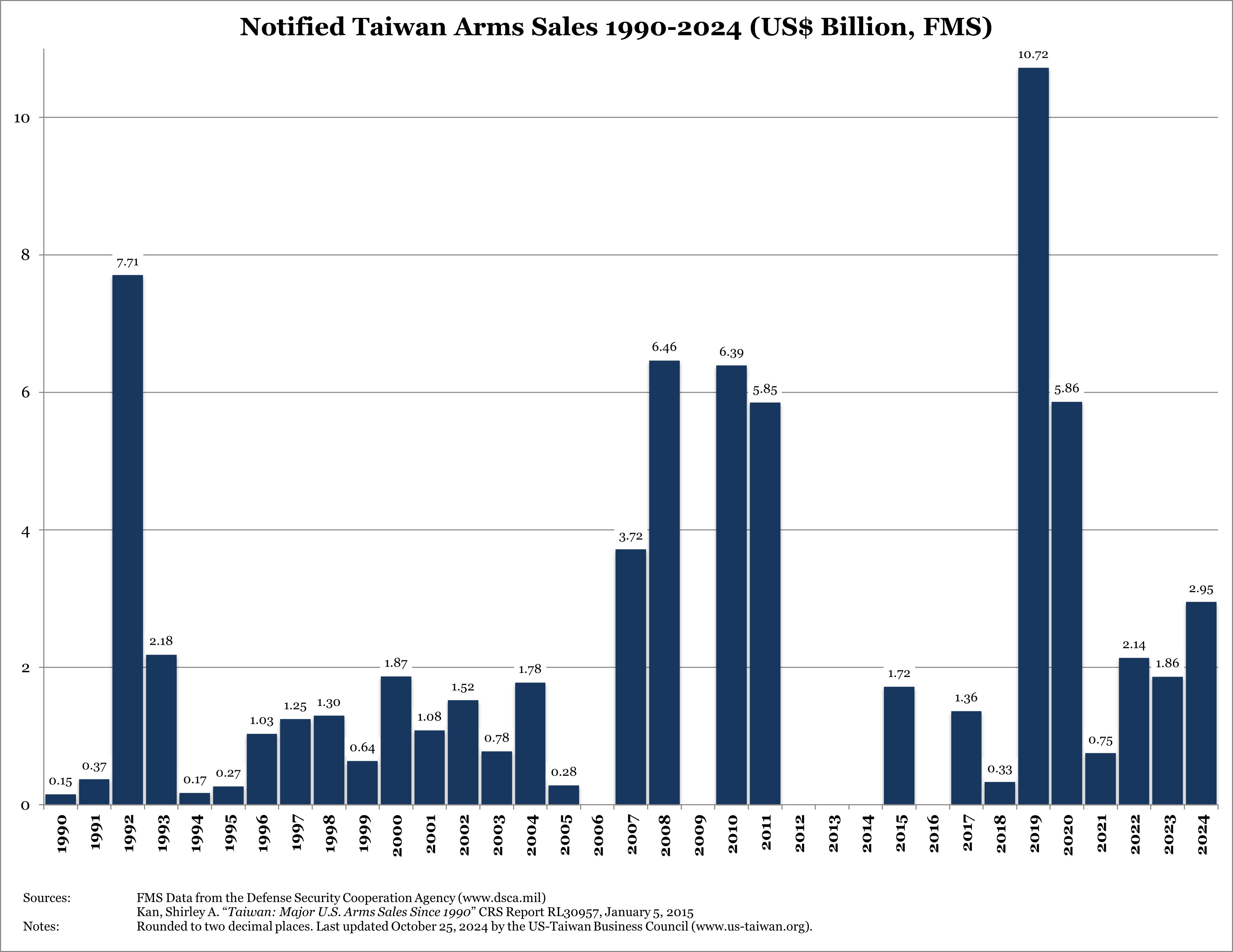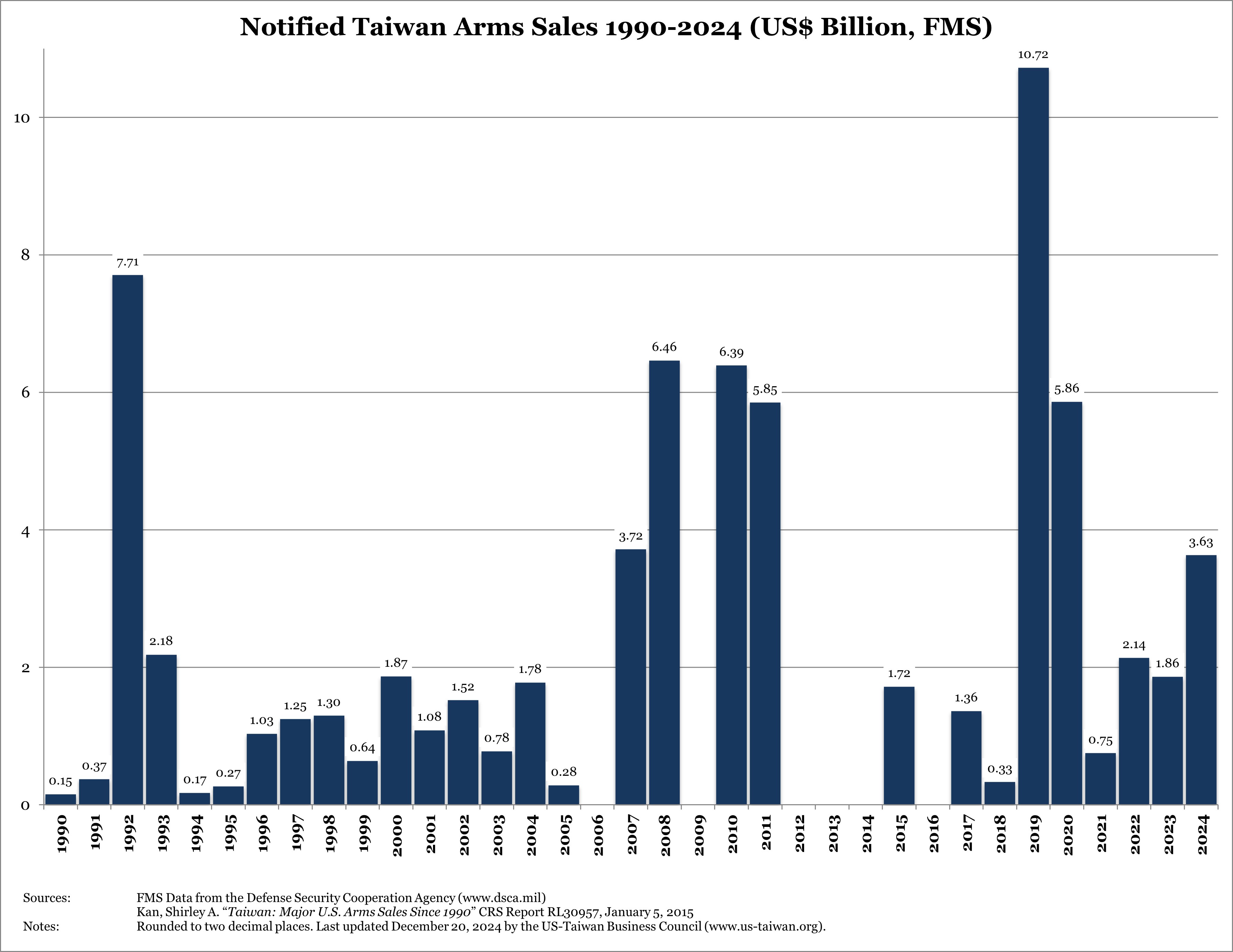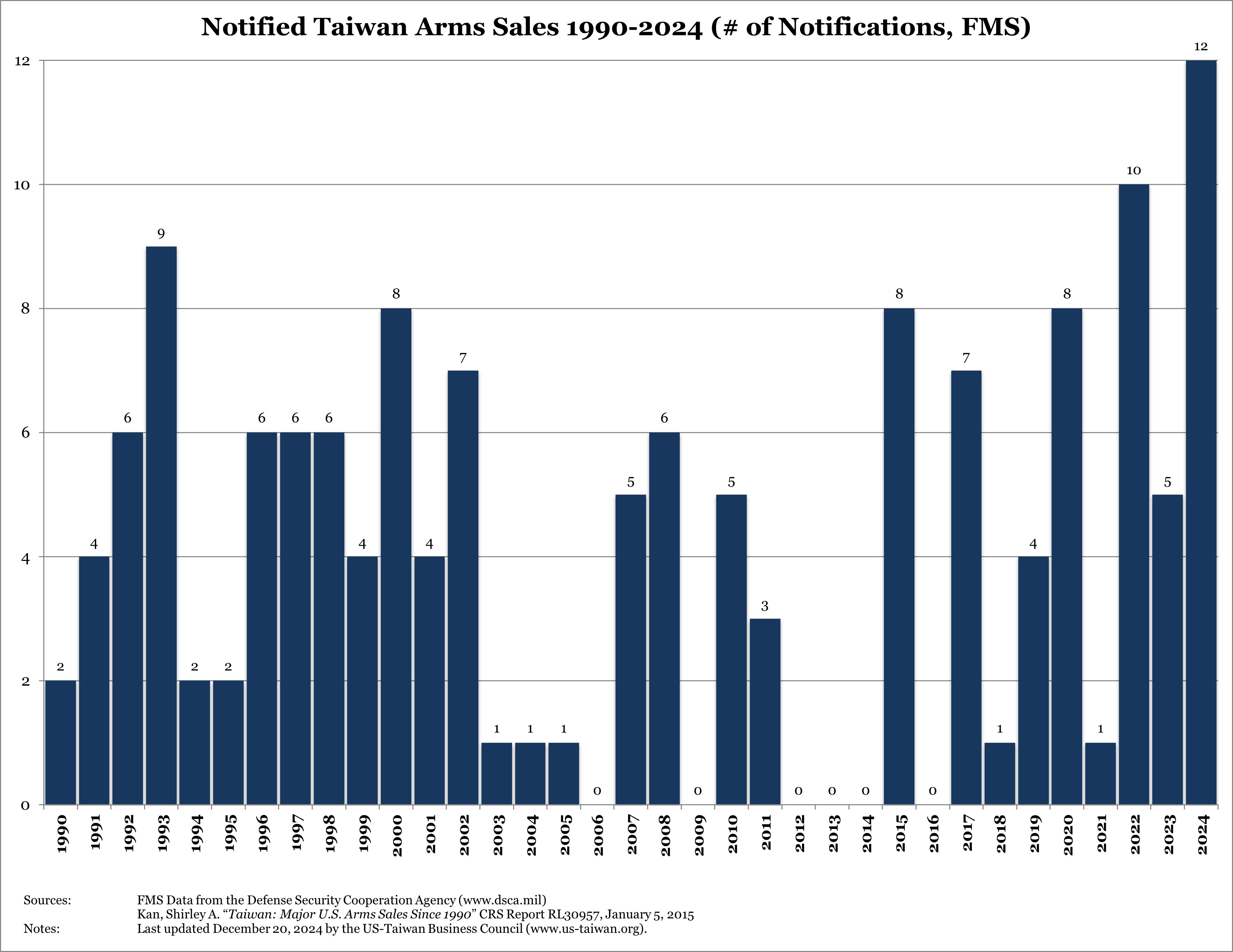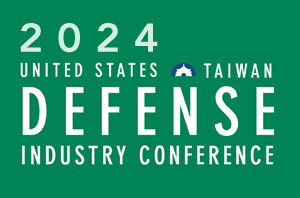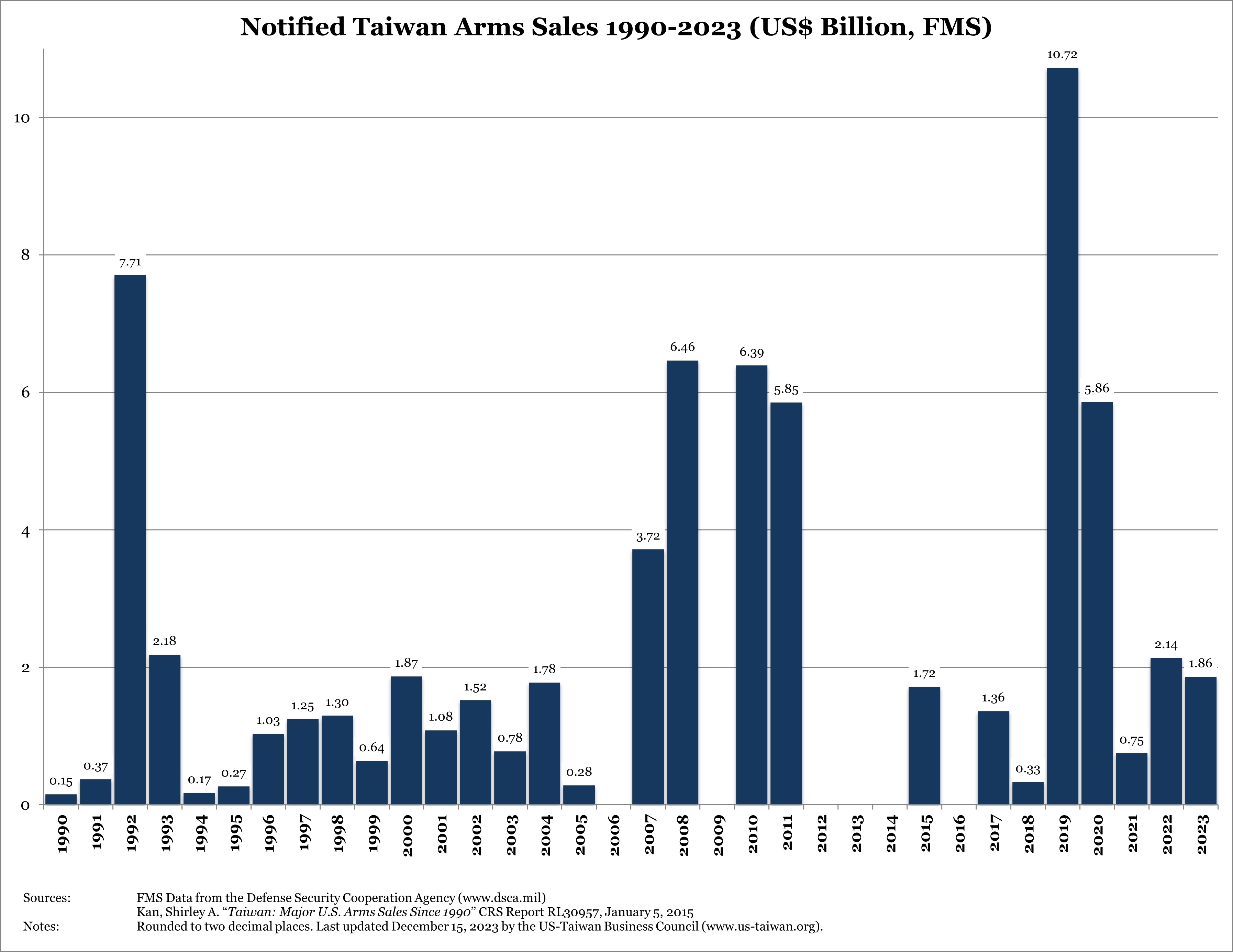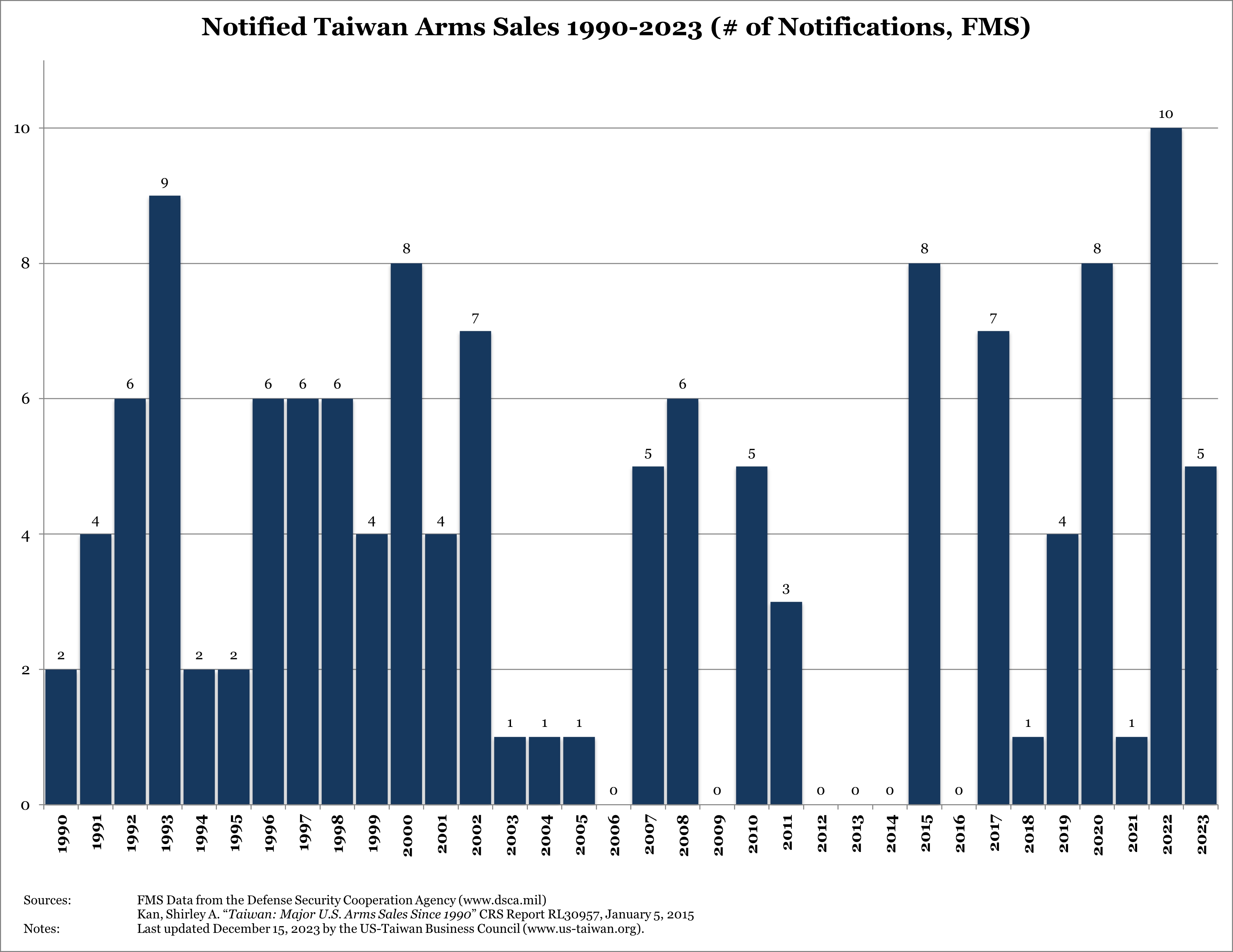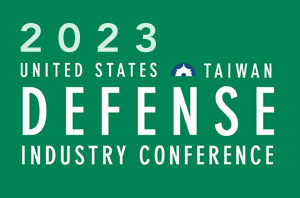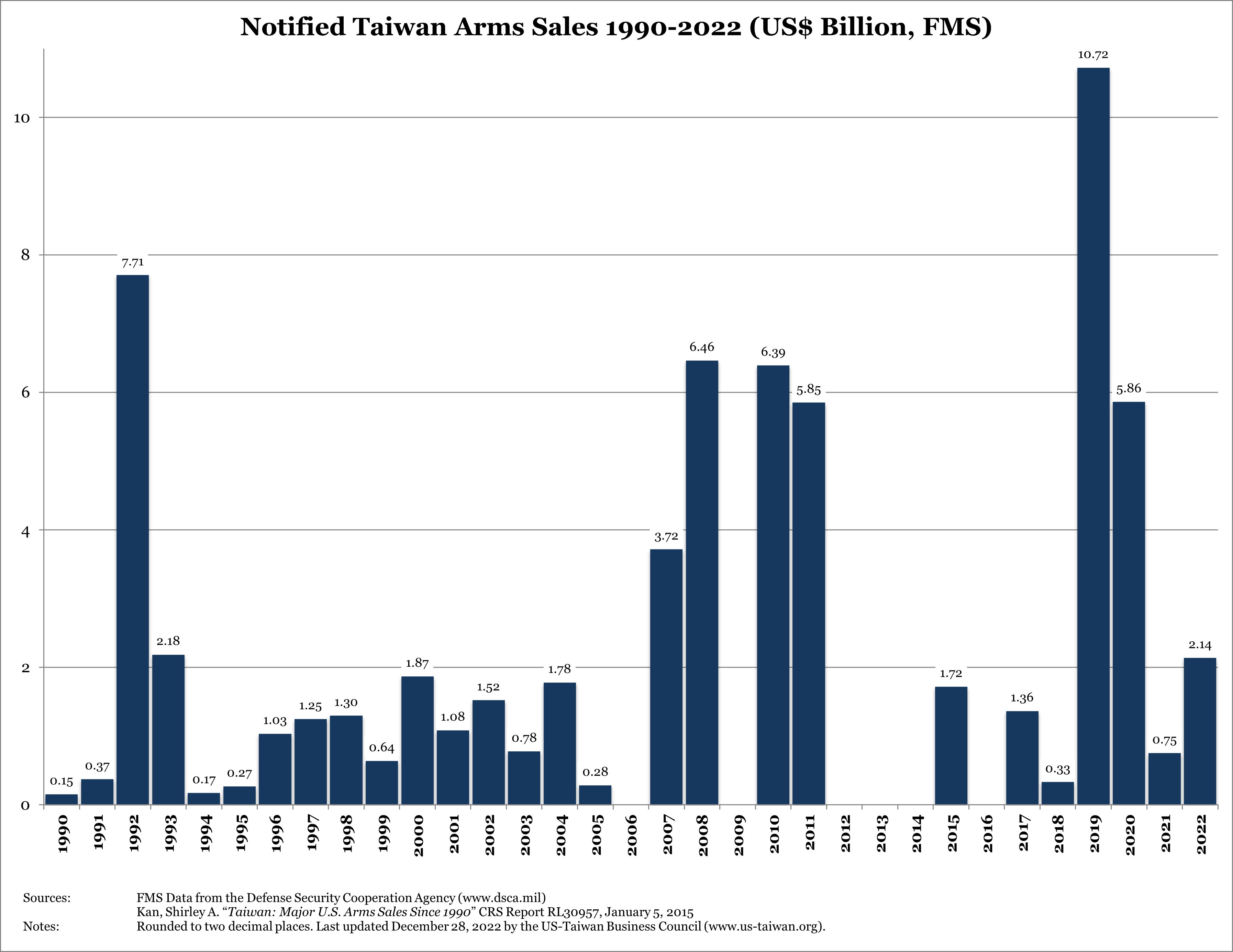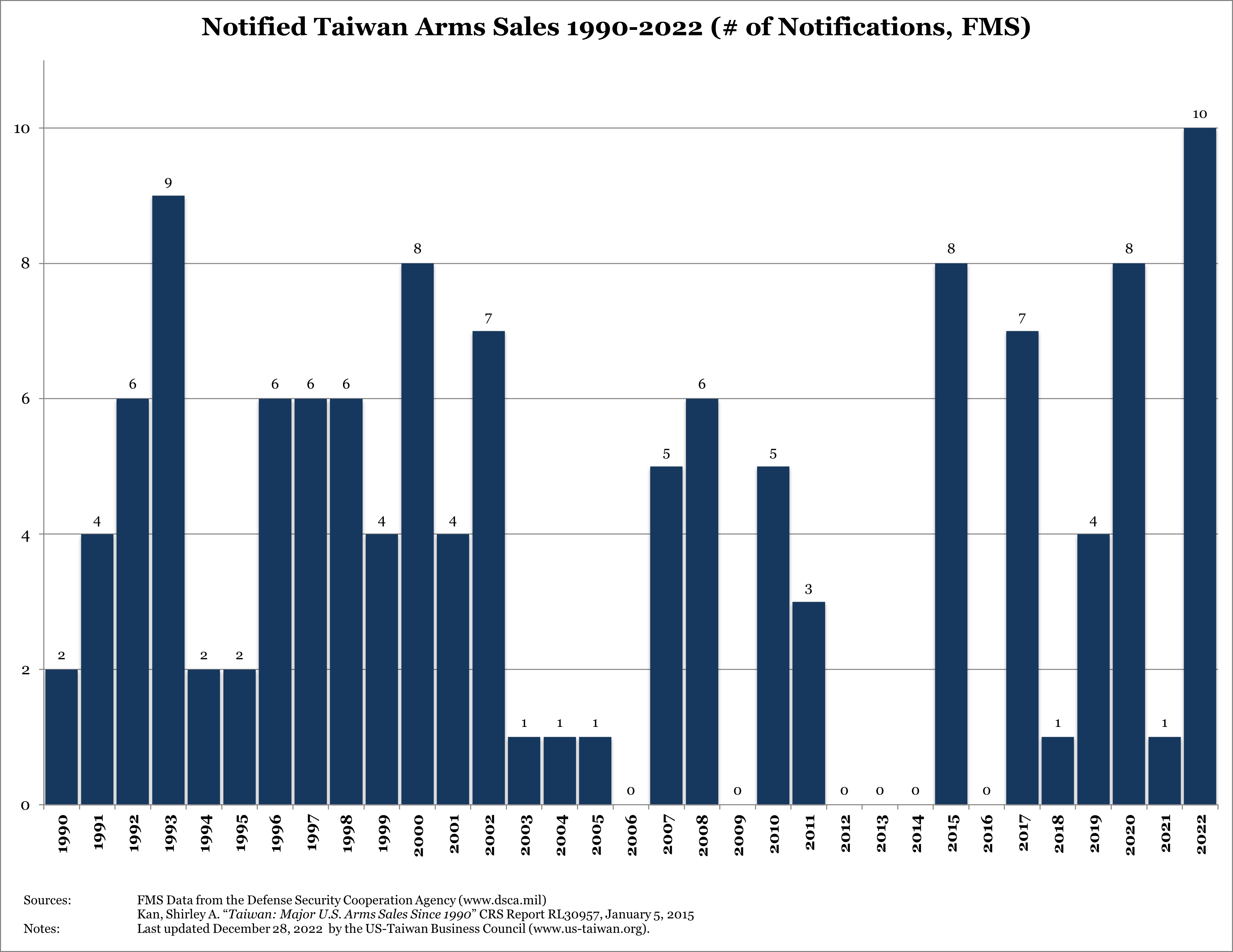The U.S. Department of Defense has released its annual report to Congress on China’s military power. This post contains selected Taiwan-related language in the 2023 report.
The Taiwan language in the previous year’s report (2022) is available here: 2022 – Military and Security Developments Involving the People’s Republic of China
Selected Taiwan Language
Eastern Theater Command
- The Eastern Theater Command is oriented toward Taiwan and the ECS.
- The Eastern Theater Command likely would be in charge of a Taiwan Invasion.
- The Eastern Theater Command was responsible for executing the PLA’s large-scale joint exercises aimed at pressuring Taiwan in August 2022.
The Eastern Theater Command has responsibility for the ECS and likely executes operational control over military matters related to Taiwan and Japan, including contingencies in and around the Taiwan Strait and the Senkaku Islands. During 2022, the Eastern Theater Command maintained focus on a series of training and exercises to improve joint operations and combat readiness, organizing exercises and drills consisting of long-distance training and mobilization, aerial combat, live-fire training, and the use of modified civilian ferries to help augment transportation.
Developments in the Security Situation in the Taiwan Strait
- In 2022, the PRC amplified diplomatic, political, and military pressure against Taiwan. The PLA’s increased provocative and destabilizing actions in and around the Taiwan Strait included ballistic missile overflights of Taiwan, sharply increased flights into Taiwan’s self-declared ADIZ and a series of major military exercises near Taiwan.
- At the 20th Party Congress in 2022, Xi Jinping repeated the CCP’s longstanding public position that China seeks peaceful unification with Taiwan but would never renounce the use of force as an option.
- The PLA practiced elements of each of its military courses of action against Taiwan during its August 2022 large-scale military exercise aimed at pressuring Taiwan, and again in April 2023 in response to Taiwan president Tsai Ing-wen’s transit of the United States.
Throughout 2022, the PRC conducted large-scale joint military exercises focused on training to deter further U.S. and allied operations along China’s periphery. Many of these exercises focused on combat realism and have featured night missions, training in extreme weather, and simultaneous multi-domain operations. The PLA is preparing for a contingency to unify Taiwan with the PRC by force if perceived as necessary by Beijing, while simultaneously deterring, delaying, or denying any third-party intervention, such as the United States and/or other like-minded partners, on Taiwan’s behalf. As part of a comprehensive campaign to pressure Taiwan and the Tsai administration and signal its displeasure at deepening Washington-Taipei ties, the PRC has persistently conducted military operations near Taiwan and military training for a Taiwan contingency. Throughout 2022, the PLA increased provocative actions in and around the Taiwan Strait, to include ballistic missile overflights of Taiwan, significantly increased flights into Taiwan’s self-declared air defense identification zone, and conducted a series of large-scale military exercises around Taiwan.
- According to Taiwan Ministry of National Defense (MND) data, the PLA sent a total of 1,737 aircraft in Taiwan’s ADIZ in 2022. This is a 79 percent increase from 972 incursions in 2021.
- Throughout 2022, the PLA also diversified the type of aircraft it sent into Taiwan’s ADIZ.
Since September 2022, when the Taiwan MND began releasing information on UAV operations in the ADIZ, UAVs have made up around 10 percent of aircraft tracked. At the 20 th Party Congress in 2022, Xi Jinping repeated the CCP’s longstanding public position that China seeks peaceful unification with Taiwan but would never renounce the use of force as an option. Additionally, the CCP amended its constitution to reaffirm that it will resolutely oppose and deter Taiwan independence. The circumstances under which the PRC has historically indicted it would consider the use of force has evolved over time. These circumstances have included the following:
- Formal declaration of Taiwan’s independence
- Undefined moves toward Taiwan independence
- Internal unrest in Taiwan
- Taiwan’s acquisition of nuclear weapons
- Indefinite delays in the resumption of cross-strait dialogue on unification
- Foreign military intervention in Taiwan’s internal affairs.
PLA Aircraft Entering Taiwan ADIZ
Tensions between the PRC and Taiwan increased in 2022, as the PRC intensified political and military pressure aimed at Taiwan. Following the U.S. Speaker of the House CODEL to Taiwan in August 2022, Beijing released a new Taiwan white paper, which was the third paper issued by Beijing since 1993. The content of the white paper appears consistent with familiar talking points from Beijing, albeit with a more pointed tone. It highlights that unification is foundational to the PRC’s “national rejuvenation,” Beijing’s preference for peaceful reunification under the “one country, two systems” framework, and a refusal to renounce the use of force to compel reunification, if needed.
Unlike the previous Taiwan white paper (released in 2000), this iteration explicitly calls out Taiwan’s ruling Democratic People’s Party for “having adopted a separatist stance,” and features heavier criticism on “external interference” by singling out the United States. The paper further asserts that all U.S. “interference” in Taiwan is guided by a strategy to use Taiwan as a “pawn” in an effort to contain China. The PRC continues to suspend formal communications with Taiwan, which began in 2016, and remains steadfast that Taiwan must accept the PRC’s view of the “1992 Consensus” to restart such engagement. China’s leaders have directly equated the “1992 Consensus” to the PRC’s “One China principle,” which was reaffirmed by President Xi in a January 2019 address to “compatriots” in Taiwan.
Consistent U.S. Defense Engagement with Taiwan
In response to U.S. defense engagement with Taiwan, Beijing routinely accuses the United States of not abiding by its One China principle. U.S. defense engagements with Taiwan, as one element of the unofficial U.S.-Taiwan relationship, remain consistent with our one China policy – as guided by the Taiwan Relations Act (TRA), three U.S.-China Joint Communiques, and the Six Assurances. U.S. defense engagement with Taiwan has evolved over time in response to the PRC’s capacity and willingness to use military coercion against Taiwan. This evolution does not contradict publicly-stated U.S. policy, and it is in fact required by U.S. policy.
The 1979 TRA states that the United States “will make available to Taiwan such defense articles and defense services in such quantity as may be necessary to enable Taiwan to maintain a sufficient self-defense capability.” In 1982, President Reagan clarified in an internal memo—which the United States made public in 2019—that the quantity and quality of U.S. defense assistance provided to Taiwan be “conditioned entirely on the threat posed by the PRC.” President Reagan further emphasized that this linkage is intended as a “permanent imperative” of foreign policy.
The United States opposes unilateral changes to the cross-Strait status quo by either side; does not support Taiwan independence; and expects cross-Strait differences to be resolved by peaceful means. United States defense engagement with Taiwan’s will continue to bolster these positions and be conditioned entirely on the evolving threat posed by the PRC and the interests of the people of Taiwan, as enumerated in U.S. policy.
PLA Response to High-Profile Visit to Taiwan by Foreign Figures
Throughout 2022, the PRC continued to respond to high-level foreign visits to Taiwan with low-level military drills near Taiwan, typically including Taiwan Strait centerline crossings, increased PLA Navy activity around Taiwan, and public statements condemning the visits. In stark contrast, the PLA responded in early August 2022 to the CODEL visit to Taiwan with significantly larger-scale military activities that included several unprecedented actions. The Eastern Theater Command conducted snap military drills that included PLA aviation flying more than 250 fighter aircraft into Taiwan’s self-declared ADIZ and 13 PLA Navy vessels operating around Taiwan. The PLARF fired multiple ballistic missiles into impacts zones in waters around Taiwan, including the first-seen instance of at least four missiles overflying Taiwan. These military drills also afforded the PLA an opportunity to train simulated joint blockade and simulated joint firepower strike operations.
PRC Military Courses of Action against Taiwan
Although Beijing reaffirms that “peaceful reunification” is its preferred course of action, the PRC continues to signal its willingness to use military force against Taiwan. The PLA has a range of options to coerce Taipei based on its increasing capabilities in multiple domains. The PRC could increasingly signal its readiness to use force or conduct punitive actions against Taiwan. The PLA could also conduct a range of cyberspace, blockade, and kinetic campaigns designed to force Taiwan to capitulate to unification or compel Taiwan’s leadership to the negotiation table on the PRC’s terms. In any case, the PRC would seek to deter potential U.S. intervention in any Taiwan contingency campaign. Failing that, the PRC would attempt to delay and defeat intervention in a limited war of short duration. In the event of a protracted conflict, the PLA might choose to escalate cyberspace, space, or nuclear activities in an attempt to end the conflict, or it might choose to fight to a stalemate and pursue a political settlement.
The PLA could offer Xi the following military options against Taiwan, listed below individually or in combination, with varying degrees of feasibilities associated risk. The PRC’s perception of domestic and international receptivity to military action, the expected impact on its economy of resulting sanctions, political trends in Taiwan, and its level of confidence in the PLA’s capability to conduct a successful invasion of Taiwan will determine which military option the PRC chooses during crises. The PLA practiced elements of each of these military options during its August 2022 large-scale military exercise aimed at pressuring Taiwan, and again in April 2023 in response to Taiwan president Tsai Ing- wen’s transit of the United States.
Air and Maritime Blockade. PLA writings describe a Joint Blockade Campaign in which the PRC would employ blockades of maritime and air traffic, including a cut-off of Taiwan’s vital imports, to force Taiwan’s capitulation. Large-scale missile strikes and possible seizures of Taiwan’s offshore islands would accompany a Joint Blockade Campaign in an attempt to compel Taiwan’s surrender, while at the same time, posturing air and naval forces to conduct weeks or months of blockade operations if necessary. The PRC likely would complement its air and maritime blockades with concurrent EW, network attacks, and IO to further isolate Taiwan’s authorities and populace and to control the international narrative of the conflict.
Limited Force or Coercive Options. The PRC could use a variety of disruptive, punitive, or lethal military actions in a limited campaign against Taiwan, probably in conjunction with overt and clandestine economic and political activities supported by IO to shape perceptions or undercut the effectiveness or legitimacy of the Taiwan authorities. Such a campaign could include computer network or limited kinetic attacks against Taiwan’s political, military, and economic infrastructure to induce fear in Taiwan and degrade the Taiwan population’s confidence in their leaders. Similarly, PLA SOF could infiltrate Taiwan and conduct attacks against infrastructure or leadership targets.
Air and Missile Campaign. The PRC could use precision missile and air strikes against key government and military targets, including air bases, radar sites, missiles, space assets, and communications facilities to degrade Taiwan’s defenses, neutralize its leadership, or undermine the public’s resolve to resist.
Amphibious Invasion of Taiwan. PRC writings describe different operational concepts for an amphibious invasion of Taiwan. The most prominent of these, the Joint Island Landing Campaign, envisions a complex operation relying on coordinated, interlocking campaigns for EW, logistics, air, and naval support. The objectives are to break through or circumvent Taiwan’s shore defenses, establish a beachhead, build up combat power along Taiwan’s western coastline, and seize key targets or the entire island.
The PLA continues to test new options to force unification. In October 2022, seven Chinese civilian car ferries, under CMM, participated in amphibious landing drills on Chinese beaches in the Taiwan Strait. In August 2022, in response to the U.S. Speaker of the House CODEL to Taiwan, the PLA conducted joint exercises focusing on establishing air, maritime, and information superiority. The exercise consisted of joint air and maritime activities to the north, southwest, and southeast of Taiwan, focused on establishing air dominance, according to Eastern media reporting.
A large-scale amphibious invasion would be one of the most complicated and difficult military operations for the PLA, requiring air and maritime superiority, the rapid buildup and sustainment of supplies onshore, and uninterrupted support. It would likely strain the PRC’s armed forces and invite a strong international response. These factors, combined with inevitable force attrition, the complexity of urban warfare, and potential for an insurgency, make an amphibious invasion of Taiwan a significant political and military risk for Xi and the CCP, even assuming a successful landing and breakout past Taiwan beachhead defenses.
Small Island Seizure. The PLA also is capable of attempting various amphibious operations short of a full-scale invasion of Taiwan. With few overt military preparations beyond routine training, the PRC could launch an invasion of small Taiwan-occupied islands in the SCS, such as Pratas or Itu Aba. A PLA invasion of a medium-sized, better-defended island, such as Matsu or Kinmen, is also within the PLA’s capabilities. Such an invasion would demonstrate military capability, political resolve, and achieve tangible territorial gain while simultaneously showing some measure of restraint. However, this kind of operation involves significant, and possibly prohibitive, political risk because it could galvanize pro-independence sentiment on Taiwan and generate powerful international opposition.
Civilian Roll-On/Roll-Off (RORO) Ships and Their Potential Use in a Taiwan Invasion
The lack of significant PLA amphibious ship buildup does not independently reflect a PLA deficiency toward building a military option to take Taiwan by force, but rather, is consistent with the PRC’s exploratory approach to testing multi-dimensional Taiwan seizure concepts.
In 2015, China’s official media reported that all future builds of five categories of civilian vessels had to be built to “national defense requirements” including container ships, RORO ferries, multipurpose vessels, bulk carriers, and break bulk ships. In 2019, images emerged on Chinese state television that at least one of its RORO ferries had been modified with a ramp to allow amphibious vehicles to disembark at sea suggesting these ferries could be used to deliver first echelon forces without requiring prior seizure of a pier. By demonstrating intent to use commercial ROROs during an amphibious invasion, the PLA is eroding the principle of distinction under the law of armed conflict and obscuring crucial lines between warships and non-warships, civilians and combatants, and civilian objects and military objectives. In a similar state media disclosure, images emerged in 2021 showing that China had modified a flat deck container vessel to function as a landing platform helicopter (LPH) or as an expeditionary transfer dock (ESD); such modification could serve as a mid-way refueling point for helicopters returning from delivering air assault forces to Taiwan or enable PLA helicopters to transport forward stocks of logistics ashore.
Although China has not officially revealed the size of its civilian fleet or how it plans to use it during an invasion, 2019 information indicated the PLA have at least 63 civilian ROROs suitable for military operations. Subsequent information from one Chinese province indicates as many as 64 civilian ROROs would be made available to the PLA in wartime and that these platforms would be equipped with weapons as part of the mobilization process. Some public estimates suggest that China’s use of its dual-capable civilian fleet could provide it greater displacement tonnage than the sum of all of the U.S. Navy’s amphibious assault ships.
In 2022, the PLA significantly stepped up RORO training to support China’s military activities by more than doubling the number of ROROs used to support similar activity in the prior year. Although most of these events consisted of troop movements within or between theaters, several marked a continued maturation towards using ROROs and other civilian shipping to support PLA amphibious force employment against Taiwan. However, these events have not demonstrated the realism or requisite tactical proficiency to engage in wartime operations. This includes the absence of opposed landing operations in unfavorable weather conditions and sea states. It also includes a lack of RORO training to operate in convoys, conduct rapid disembarkation, and the offload of PLA forces at sea while underway.
Floating Causeway Improvement. During three events between May and July 2022, two Chinese civilian ROROs participated in docking evolutions with a new floating causeway system intended to allow ROROs to disembark forces onto a beach without seizing a port or being modified to discharge amphibious vehicles at sea. The causeway observed in 2022 featured several improvements over the one used in 2021 to include having six uniform self- propelled sections extendable to an additional 200 meters. The causeway system seems to rely on a semi-submersible barge to stabilize the causeway, which may limit its utility for a cross strait invasion. However, PLA naval writings stress the importance of floating causeways, especially those with wave attenuation capabilities, as one solution to dealing with Taiwan ports that might be inaccessible for off-loading operations in wartime.
Large-Volume Lift Exercise. From mid-July to mid-August, the PLA conducted large amphibious lift exercises along China’s Northern and Southern coast, using 12 civilian ships including eight large RORO ferries. The lift capacity, number of vessels stops, and the number of participating ground vehicles suggest this training could have simulated the movement of up to a full group army for the first time. The PLA also conducted a five-day loading/unloading exercise in September 2022 using six ROROs and three cargo ships to simulate the movement of a heavy combined arms brigade in a Taiwan invasion.
Denial and Deception Training. In August 2022, a PLAA air defense brigade exercise attempted to obscure observation of its loading onto a RORO in the Bohai Gulf. A PLA video showed the brigade entering a dock-side building where it hid for an undetermined period of time before loading onto a RORO using a tarp that extended from the building to the ship, likely intended to limit observation of their loading activity.
Austere Port Operations. In mid-August 2022, a single RORO supported the transport of roughly 40 vehicles from a portion of Dongshan Port that had little cargo handling infrastructure, no pier-side RORO ramp, and no tugboat support. This training suggests the PLA seeks the capability to operate from any intact pier, even ones without offloading infrastructure.
RORO Participation in PLAN Amphibious Forces. From August 31 st to September 2 nd , 2022, the PLA conducted its most complex use of civilian shipping for amphibious assault operation at Dacheng Bay and Honghai Bay in southern China. The exercise featured 10 civilian ships – including RORO ferries and RORO vehicle carriers – operating alongside PLAN amphibious ships, including at least one Type-071 LPD. The operations at Dacheng Bay made use of the new six-segment floating causeway, supported by a San Hong Gong submersible floating barge, which docked with at least one RORO ferry. ROROs in both exercise area off-loaded forces at sea, suggesting stern ramp modifications allowing for at-sea disembarkation are becoming more commonplace within the RORO fleet. One combined-arms amphibious brigade and one combined-armed amphibious battalion were believed to have been delivered as part of this exercise.
The PLA’s Current Posture for a Taiwan Conflict
PLAA. The PLAA has increased its posture in the Eastern Theater Command and along the Taiwan Strait, providing the PLAA with enhanced firepower, mobility, and rapid strike capabilities. Significant reorganizations and amphibious assault training in recent years likely indicate that the Taiwan contingency is a high priority for the Army. Major PLAA contributions to a Taiwan invasion scenario likely include extensive amphibious, army aviation, and air assault operations. The PLAA fields six amphibious combined arms brigades—four in the Eastern Theater Command (nearest Taiwan) and two in the Southern Theater Command. PLAA units continued amphibious assault training as a single service and with joint service counterparts in 2022. Training events refined the tactics of rapid loading, long-distance transport and beach assault under complicated sea situations, and logistic support capabilities. Press reports also claimed that the PLA extensively used sea, air, and ground UAS in support of the amphibious assault operation. PLAA amphibious brigades reportedly conduct realistic, large-scale amphibious operations that are almost certainly aimed at supporting a Taiwan invasion scenario.
PLAN. The PLAN is improving its anti-air, anti-surface, and ASW capabilities, further developing an at-sea nuclear deterrence, and introducing new multi-mission platforms capable of conducting diverse missions during peace and war and has increased its posture surrounding Taiwan since August 2022. New attack submarines and modern surface combatants with anti-air capabilities and fourth-generation naval aircraft entering the force are designed to achieve maritime superiority within the FIC as well as to deter and counter any potential third-party intervention in a Taiwan conflict.
The PRC’s amphibious fleet has in recent years focused on acquiring a modest number of ocean- going LPD and LHA ships. There is no indication the PRC is significantly expanding its number of tank landing ships (LSTs) and medium sized landing craft at this time. Although the PLAN has not invested in the large number of landing ships and medium landing craft that analysts believe the PLA would need for a large-scale assault on Taiwan, it is possible the PLA assesses it has sufficient amphibious capacity and has mitigated shortfalls through investment in other operational capabilities, such as civilian lift vessels and rotary-wing assets to address this gap. The PLA may also have confidence in the PRC’s shipbuilding industry’s massive capacity to produce the necessary ship-to-shore connectors relatively quickly.
PLAAF. The PLAAF has maintained a ready force posture for a variety of capabilities necessary in a Taiwan contingency. It has acquired a large number of advanced aircraft capable of conducting operations against Taiwan without requiring refueling, providing it with a significant capability to conduct air and ground-attack operations. A number of long-range air defense systems provide a strong layer of defense against attacks on key military installations or population centers on China’s mainland. The PRC’s development of support aircraft provides the PLAAF with improved ISR capability to support PLA operations. The PLAAF also has improved refueling capabilities, expanding its ability to operate further from China and increasing its ability to threaten third party intervention. Throughout 2022, Eastern Theater Command-based PLAAF units operated at higher levels than in previous years. Taiwan ADIZ incursions involved greater numbers of aircraft and were more frequent than in 2021, demonstrating the PLAAF’s improved ability to sustain pressure on Taiwan.
PLARF. The PLARF is prepared to conduct missile attacks against high-value targets, including Taiwan’s C2 facilities, air bases, and radar sites, in an attempt to degrade Taiwan’s defenses, neutralize Taiwan’s leadership, or break the public’s will to fight. As of 2023, the PLARF is increasing its presence along the Taiwan Strait with new missile brigades, possibly indicating an increasing number of deployed missiles.
Strategic Support Force (SSF). PLA doctrinal writings emphasize the importance of space and cyberspace domains in joint operations. PLA writings suggest that the SSF would be responsible for the use of EW and cyberspace operations during a Taiwan contingency, as one of the missions of the force is to seize and maintain information dominance. The SSF 311 Base would be responsible for political and psychological warfare, such as disseminating propaganda against Taiwan to influence public opinion and promote the PRC’s interests. The SSF would also play a strategic information and communications support role, centralizing technical intelligence collection and management and providing strategic intelligence support to theater commands involved in a Taiwan contingency. Following the U.S. Speaker of the House’s CODEL in August 2022, Taiwan’s MND claimed that China launched widespread cyber-attacks against Taiwan.
Joint Logistic Support Force (JLSF). The JLSF’s primary goal is to provide joint logistics support to the PLA’s strategic and campaign-level operations, such as a Taiwan contingency, by conducting C2 of joint logistics, delivering materiel, and overseeing various support mechanisms. The JLSF participates in joint, theater-level exercises, becoming most relevant when units operate far from their home garrisons and beyond their organic logistics capabilities.
Taiwan’s Ability to Deter the Mainland
Taiwan has positioned itself as “a beacon of democracy” to generate international support and expand regional security ties. Taiwan is taking steps to compensate for the growing disparity with the PLA, including building its war reserve stocks, growing its defense-industrial base, improving joint operations and crisis response capabilities, and strengthening its officer and noncommissioned officer corps. Taiwan’s Quadrennial Defense Review 2021 reflects adjustments to the military’s strategy for defending the island by placing emphasis on protecting its littorals and near-shore coastal areas in a multi-layered defense-in-depth. The modified strategy stresses enhanced asymmetric and joint capabilities, as well as suggesting greater reliance on Taiwan’s Air Force and Navy through multi-domain deterrence measures.
In 2022, Russia’s war on Ukraine and the PRC’s forceful response to then-U.S. Speaker of the House’s CODEL to Taiwan in August increased the urgency with which Taiwan is pursuing defense reforms. The PRC’s response to the then-U.S. House Speaker’s visit accelerated the PRC’s ongoing military and gray zone activity toward Taiwan. The PRC’s actions likely intended to establish a new status quo and to place greater operational demands on Taiwan’s military. Taiwan’s planned improvements only partially address its defense challenges, and a majority of Taiwan citizens believe that the then-Speaker’s visit and the PLA response were detrimental to Taiwan’s security.
Taiwan’s armed forces are authorized to fill approximately 215,000 billets, including 188,000 active-duty billets. As of 2021, the MND had accomplished its goal to fill 90 percent of the active duty billets (169,000) with volunteers. As Taiwan transitions to an all-volunteer force, the cost savings from manpower reductions provided some margin to improve individual pay and benefits, housing, and incentive pay. However, these savings have been insufficient to cover the full increase in manpower-related costs needed to attract and retain personnel under the new system. Taiwan also faces considerable equipment and readiness obstacles.
Reservists, conscripts, and civil defense volunteers support the volunteer active duty forces. Taiwan’s number of reserve personnel ranges from one to two million, while there are fewer than half a million conscripts. In 2021, Taiwan passed legislation to establish an organization to improve the mobilization of reserves and civilians to support military operations. In 2022, Taiwan implemented this legislation by establishing the All Out Defense Mobilization Agency, which coordinates a whole-of-society approach to support military operations and disaster prevention and response. In December 2022, Taiwan announced that it would extend the duration of mandatory military conscription service from four months to one year and double conscripts’ monthly salary starting in 2024.
Taiwan continues to increase its defense budget to support defense acquisitions and strengthen its forces against Chinese pressure. In 2020, the Tsai administration announced defense spending to be the highest level since 1990. In October 2022, Taiwan proposed total defense spending of about $19 billion for 2023, a 13.9 percent increase from 2022, which will represent about 2.4 percent of Taiwan’s GDP. In January 2022, Taiwan approved an $8 billion multi-year supplemental defense budget to strengthen Taiwan’s air and sea combat capabilities. Over half of Taiwan’s supplemental defense spending will fund missile corvettes and anti-ship weapons, such as the Hsiung Feng missile system. Meanwhile, China’s official defense budget continues to grow to around $230 billion in 2022, about 12 times larger than Taiwan’s defense budget, with much of China’s defense budget focused on developing the capability to unify Taiwan with the PRC by force.
Recognizing the growing disparity between their respective defense expenditures, Taiwan has stated that it is working to develop new cost effective concepts and capabilities for asymmetric warfare. Specific areas of emphasis in Taiwan’s strategy include offensive and defensive information and electronic warfare, high-speed stealth vessels, shore-based mobile missiles, rapid mining and minesweeping, unmanned aerial systems, and critical infrastructure protection. Taiwan has also dedicated significant defense spending toward its Harpoon Coastal Defense Systems, domestic submarine program, upgrading its existing F-16 fighters and producing the remaining three of a previously planned four transport docks.
The United States maintains a one-China policy that is based on the TRA, the three U.S.-PRC Joint Communiqués, and the Six Assurances; opposes unilateral actions aimed at altering the status quo; and continues to support the peaceful resolution of cross-Strait issues in a manner, scope, and pace acceptable to both sides. Consistent with the TRA, the United States contributes to peace, security, and stability in the Taiwan Strait by providing defense articles and services to enable Taiwan to maintain a sufficient self-defense capability. Since 2009 Taiwan has received about $30 billion in arms sales from the United States. Taiwan currently has arms sales agreements to acquire Stinger missiles, Javelins, High Mobility Artillery Rocket Systems, Harpoon missiles, and F-16 fighter jets.
